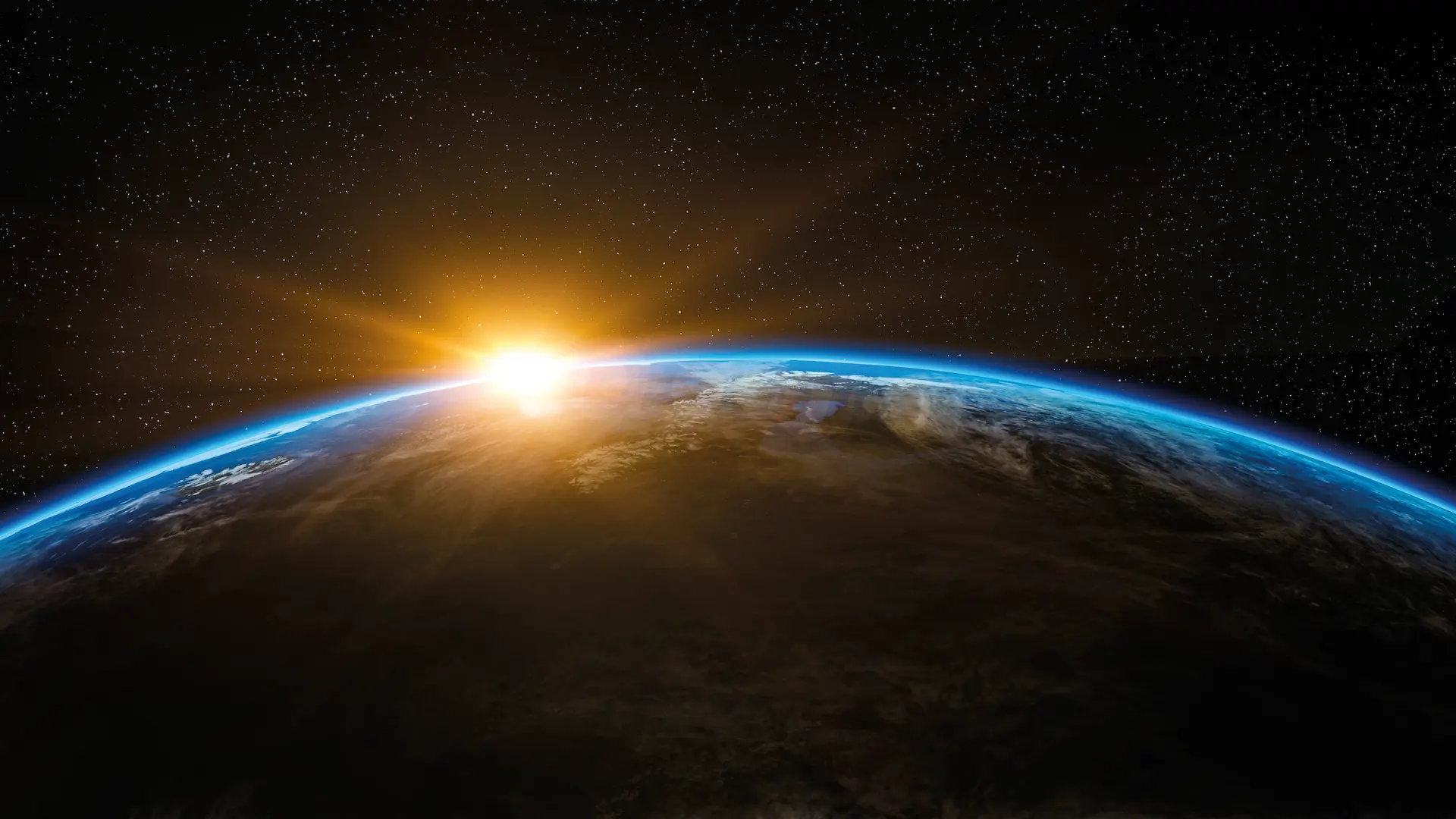How old is life? The biological evidence
February 1, 2019

Media scientists and textbook writers commonly assert that life is billions of years old. Many Christians embrace the biblical record of history, documenting the relatively recent creation of life—thousands, not billions of years ago. Both views involve elements of faith, but what do the data say? The best approach to investigating when life started is to study living things. Let’s look at five lines of evidence from living (and once-living) things to see what they suggest about when life began on Earth.
Evidence 1: Ancient biomolecules
In 2007, North Carolina State University paleontologist Dr Mary Schweitzer dissolved away the minerals in a fragment of dinosaur bone. She should have ended up with nothing, but instead she found soft tissue—proteins that looked like blood vessels and additional structures.
Proteins, DNA and other large biological molecules are broken by water, oxygen, other chemicals and radiation. That is why, at least in theory, if dinosaur bones are millions of years old, there should be no protein remaining in them. Of course, theory isn’t the same as observation and proteins, along with other biological molecules, have now been observed in a lot of fossils.
Some scientists, including Dr Schweitzer, have suggested that maybe proteins are preserved in the presence of iron, or when they are associated with the mineral part of bone. These explanations are quite difficult to swallow—it seems more reasonable to take the evidence at face value: these bones may be a few thousand years old, but not many millions.
Evidence 2: mutations
Changes in DNA molecules, called mutations, may be caused by chemical damage, viral infections, radiation or errors in copying DNA. DNA contains the recipes for how, when and where to make the proteins in our bodies. As with cooking recipes, randomly changing protein recipes can result in bad outcomes.
Thankfully, the information encoded in DNA is remarkably robust so most of the time mutations don’t kill us—or at least, not immediately. When a mutation is really bad, generally the person with it dies, so it isn’t passed on to their children. But what about those mutations that are just a little bit negative, but don’t kill you? These are called “near-neutral” mutations and, they are not weeded out by natural selection. Instead these near-neutral changes accumulate in our DNA.
There are different estimates of how fast mutations are accumulating, but commonly they run above 100 mutations per person per generation. Even though most of these changes are only slightly negative, at our current mutation rate, the recipes for the vital proteins in our bodies will eventually be corrupted to the point that we can’t survive.
So, if we can’t last forever, how long can we last? Time will tell, but millions of years seems way too optimistic. It’s depressingly obvious that humans and other organisms are unlikely to last too many thousands of years longer. Even unbelievers should be hoping for a new era in which our DNA are created new and incorruptible—something akin to the Bible’s promise of a “new creation”. Otherwise, humanity has little hope for the future.
The observable evidence here shows that our genetic codes are being degraded over time, which is in stark opposition to the mainstream scientific conception that our DNA has been improving—evolving—over the last few billion years.
Evidence 3: Improbable hybridisations
A gardener working in the Oxford Botanical Gardens around 1670 noticed some tree saplings that he had never seen before. It turned out that these new trees were the result of hybridisation between American sycamore trees, Platanus occidentalis, and oriental plane trees, Platanus orientalis, whose native range extends from the Balkans to Iran.
These species normally grow more than 5000 km apart. The continents they are native to are supposed to have separated tens of millions of years ago. That is the kind of timespan that Darwinists typically invoke to explain the evolution of humans, chimpanzees, old world and new world monkeys from some kind of primitive monkey.
The idea that two organisms could be separated by thousands of kilometers and tens of millions of years, yet still be capable of interbreeding, seems incredible, and it seems even more incredible from a Darwinian perspective than from a biblical perspective. There are alternative and more reasonable explanations. The most obvious is that these two species are not separated by tens of millions of years. This may be because life isn’t millions of years old, or it may be that what became the American sycamore was transported in the relatively recent past from the Middle East to what is now the United States. In either case, there is no 50 million years. And this is not the only example—unexpected hybridisations are not uncommon in biology.
Evidence 4: Interchangeable parts
Biological cells teem with a wide variety of nanomachines performing all the functions necessary to keep those cells alive. Do these elegant molecular machines look as if they evolved in different kinds of organisms over millions or billions of years?
It would be surprising to find out that the headlights of a 2018 Ford Focus are interchangeable with those from a five-year-old Focus model, and preposterous to believe they could be replaced with the headlamps of a Model-T Ford. Yet, interchangeability between parts of molecular machines in different species is common.
Signal Recognition Particle (SRP), which plays a vital role in production of the proteins found in membranes, is a molecular machine that illustrates this interchangeability. SRP is made up of a strand of RNA—a molecule similar to DNA—and several proteins. The protein and RNA components of SRP are interchangeable between humans and Xenopus laevis (frogs) or Drosophila (flies). Replacing one major component of Canis familiaris (dog) SRPs with the single large SRP protein from a bacterium called Escherichia coli, makes a SRP functional in all respects except for binding to a cellular receptor. The corresponding dog SRP protein can bind to the RNA portion of E. coli SRP.
Data like these are well explained by a model in which a designer uses standard parts to make different machines and these machines have not drifted apart over time. The idea that modern dogs and bacteria separated from a common ancestor a billion or more years ago and went through extraordinary changes to be completely separate species, yet retain interchangeable molecular parts, stretches credulity. By comparison, a more recent creation of distinct kinds of organisms by the same Designer seems quite reasonable. Both phenomena require miracles, but maintaining interchangeable parts over a billion years seems a very long and complex miracle compared to a recent creation as recorded in the Bible.
Evidence 5: Carbon-14
Radiometric dating is commonly seen as one of the strongest argument that life is millions or billions of years old. When measuring the age of biological things, the most obvious method to use is Carbon-14, because carbon is present in all living things. The problem is that Carbon-14 breaks down relatively rapidly; about half is gone in 5700 years, half of the remaining Carbon-14 is gone after another 5700 years and so on. As there is very little Carbon-14 in the first place, by the time a sample is over 100,000 years old, there should—at least theoretically—be too little Carbon-14 to measure.
It turns out that Carbon-14 has been detected and measured in coal and other biological samples that are supposed to be tens of millions, or even hundreds of millions of years old. Most reasonably, measurable Carbon-14 means the plants that formed the Carbon-14 containing coal lived within the past 100,000 years.
What does a Darwinist who believes life is millions or billions of years old to do with these data? Generally, the response is that the Carbon-14 is a contaminant, or that it was somehow generated within the samples. There are responses that could be made to these responses, but they get progressively more technical. If nothing else, this situation illustrates that scientists commonly reject radiometric dates, like Carbon-14 dates, when they do not agree with their prior ideas about the way things must be.
Conclusions
This is not an exhaustive list of all the possible scientific evidence consistent with the biblical record of life’s recent creation. Living things really don’t give direct evidence that life is billions of years old and much evidence is best explained by the understanding that life is only thousands of years old.
Evidence interpreted within a biblical framework requires an equal number, or fewer, assumptions and logical steps than interpretations requiring long expanses of Darwinian time. Generally, the fewer the logical steps, the more reasonable an explanation is considered to be. Everyone who wishes to know what is true will have to figure out for themselves what they believe about life’s origins. In doing this, it’s important to keep an open mind and examine all the evidence. Nice neat explanations encompassing all the data do not currently exist; faith is always necessary, but for someone who is drawn towards Christian faith it is reassuring to see what a fair examination reveals about how well the data we can gather from the study of living things fits with the biblical record of life’s history.
Tim Standish heads environmental biology and public policy for the Geoscience Research Institute, California. He grew up as a missionary kid, and holds a PhD in environmental biology.







